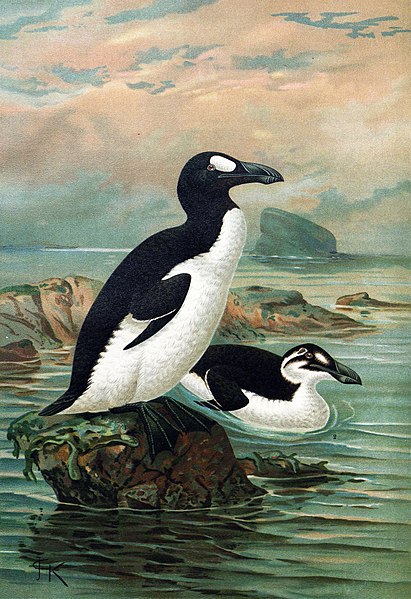
I've been reading about extinct species, the sorry tale of how the last of the species fared. Martha, the last passenger pigeon, died in the Cinncinnati zoo, the last Rabb's fringe-limbed tree frog stilll lives in the Atlanta zoo. Conservation efforts for all of these were too little too late. The last great auks met a much more harsh ending: beaten and strangled. In one case, superstitious sailors thought one was a witch. Oh, but we're smarter now, aren't we? Looking around the world and hearing about poaching of rhinos for their horns, or elephants for theirs tusks, or sharks for their fins, I'm not so sure. We would never hack a thoroughbred to death, but that's how bluefin tuna, the thoroughbreds of the sea, meet their death.
We evolved from the same tree of life as the rest of the species that inhabit the planet and yet we treat all of nature as a commodity. In Carmel Point, Robinson Jeffers writes:
We must uncenter our minds from ourselves;
We must unhumanize our views a little, and become confident
As the rock and ocean that we were made from.
I wonder what the planet would look like if we shifted our focus away from ourselves, "uncentered our minds"?
In 1994, Canadian writer Farley Mowat published, Sea of Slaughter, a history of human exploits in the north Atlantic seabord. It's an incredible tale of devastation and destruction that alas, does not end 150 years ago with the demise of magnificent birds like the great auk or even 100 years ago with the death of the last passenger pigeon. Mowat pulls no punches in his description of carnage and a film version, made for the CBC, contains incredible footage of thriving rookery islands and also bloodbaths of humans destroying animals. Perhaps we need this honest look at ourselves more often before we're ever going to change our relationship with animals.
No comments:
Post a Comment